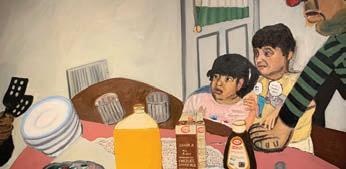HolidayPreviewArts

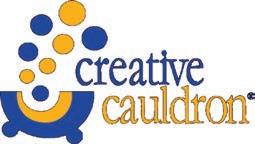







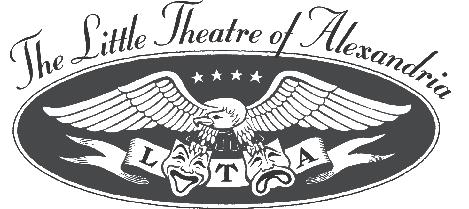
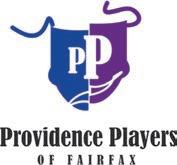

- 26, 2025













- 26, 2025
by Mark Dreisonstok
For its autumn student production, George C. Marshall’s Statesmen Theatre presented “Adventures in Wonderland,” adapted from the timeless Lewis Carroll works “Alice’s Adventures in Wonderland” and “Through the Looking Glass.” On its surface, Alice’s story is of a girl, distanced from her own family, who falls down a hole into a world all her own and not hers at all, all at once. Yet more deeply, the “Adventures” serve as an opportunity to reflect on themes such as escapism, self-esteem, growing up, and the magic as well as logic of this world. As Alice travels through the world below the world above, she transforms both physically and in maturity and selfconfidence, both through potions and trying circumstances. Led by the White Rabbit, she traverses larger-than-life perils in a way that ever builds her character. The story is wrought with complex symbols to which each reader or viewer can find personal real-world parallels. The Marshall production faithfully fulfilled all of these expectations of the tale.
In the adaptation by Marshall’s theatre director, Ahmad Maaty, we meet Alice while still in the “real world,” where she is accused of having a wild imagination. She is told to stay innocent as long as she can. However, Addi Reeves as Alice exclaims, “I’d like to do wild things, like climb trees!” Once she has entered a fantasy wonderland, however, she is less comfortable about being in a world with no rules. A creature says to Alice: “Your rules don’t apply here.” “If the rules don’t hold, everything falls apart!” retorts Alice. Here it should be remembered that “Alice” author Lewis Carroll was a logician and mathematician and that the notion of logic is an important aspect of the story.
Mr. Maaty explains what he wished to convey in his choice and production of “Adventures in Wonderland:” “I wanted to create a playground for imagination, storytelling, and adventure. I think in this era and at the high school stage of life there is this absence of play and a complete rejection of your child self. There is a great desire or even push to grow up faster than we are ready, and while the world
and its happenings make a lot of this inevitable, I wanted to send a message that it’s okay to be present with your child self even through adulthood, to make sure you are experiencing life at its fullest and also giving yourself a softer landing when transitioning to adulthood.”
Joining Miss Reeves in the production were Caroline Shelton as the White Rabbit (ubiquitous throughout the performance), Fiona Regal as the Queen of Hearts, and Alexander Beam as the famous Cheshire Cat. Ava Krasner took on no fewer than three parts: Elizabeth, Gryphon, and Jabberwocky Flame. Ashley Thompson served as flautist, but she was also the composer of several of the musical pieces used in the production.
Multi-colored lighting and props of a very large heart as well as stage designs of hearts, diamonds, clubs, and spades from a deck of cards lent a special atmosphere to the performance. Costumes were not only very good but also referenced different approaches to “Alice in Wonderland” over the years: there was the “Alice blue gown” approach of the classic Disney animated feature of having
Alice dressed in long blue dress and white apron, while black and dark purple costumes and umbrellas at another moment suggested the Tim Burton-Johnny Depp 2010 live action cinematic interpretation. “Adventures in Wonderland” has now closed, but theatre performance plans at George C. Marshall High School are set for spring: Mr. Maaty likes to alternate between types of shows, so the spring student production will be the musical “Footloose,” which will be held at the Statesmen Theatre from April 23 — May 5.
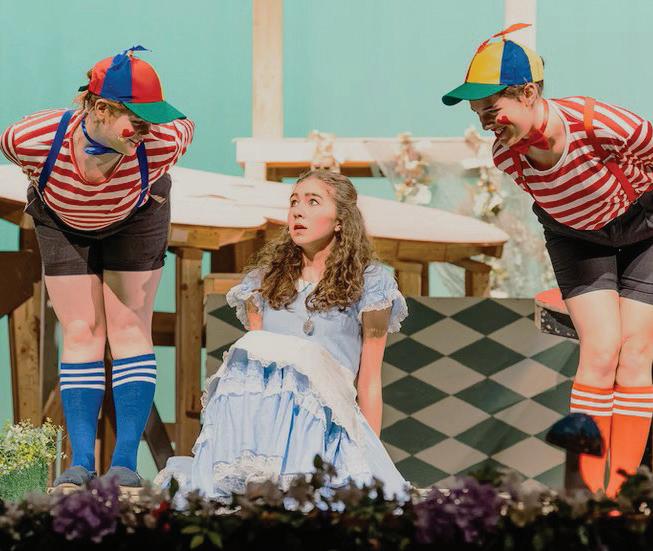











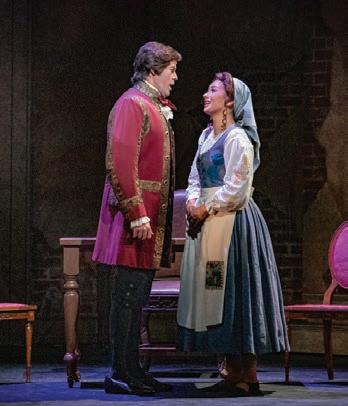
by Lisa Sinrod
This action thriller released on November 14 and rated R is an adaptation of a 1982 novel by Stephen King, written under his pen name of Richard Bachman. It takes place in the near future and feels moody and dystopian. I didn’t expect to enjoy the film as much as I did. The combination of a talented cast, reasonable script and tight action sequencing is entertaining and provides for a good diversion. Glen Powell’s performance in the lead role employs a strong sense of physicality and commitment, which is spot on for his character. He did many of his own stunts in the role of Ben Richards, an unemployed blue-collar man with a wife and young daughter. They live in Co-Op City, a run-down part of town which is sharply separated from where the affluent reside.
signed to manipulate the contestants. Richards begins the “run” with a 12-hour head start, along with two other final contestants. The twists and turns of surviving, while the public watches and participates in the media spectacle, are the central plot of the film. The theme of class division continues throughout as the elite entertain themselves while watching citizens become hunters and the hunted.
A prior movie adaptation from King’s novel starred Arnold Schwarzenegger in 1987. An interesting fact is that in the 1982 novel, the near future was set in 2025 with the backdrop of poverty, over-population, environmental decline and a totalitarian landscape. Since we’ve already arrived at 2025, the new film takes place at an unnamed future time from where we are now.
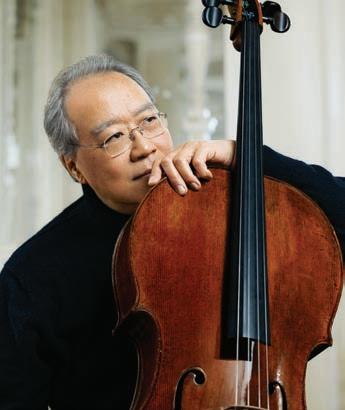

The two-tiered system of the haves and have-nots appears to be in a police state controlled by media networks in this modern rendering. Richards and his wife try to make ends meet while she works and he searches for a job. They become increasingly desperate when they can’t afford medication needed by their daughter due to illness.
The movie centers around a brutal and very popular television show (called “Running Man”), produced by one of the controlling media networks.
The contestants try to survive for 30 days while being hunted by professional assassins aided by the public. Not surviving literally means death. Against the wishes of his wife, Richards competes against many and makes the final cut to be a contestant in this high-stakes venture. Josh Brolin gives a fine performance as the television show’s ruthless producer, with a velvet smooth presentation de -


Glen Powell, age 37 and known for his roles in “Top Gun: Maverick,” “Hit Man” and “Twisters,” was a good choice to play Ben Richards. Colman Domingo is excellent as the deadly game show’s host. Director Edgar Wright (“Baby Driver”) infuses the movie with high energy action and a somewhat interesting story, all of which harkens back to the action films of the 1980s. The action scenes include ingenious escapes made by Richards, as the television contestant. Weaknesses in the film include the premise of network television executives controlling society at a future time as compared to the more likely relevance of the modern internet and artificial intelligence in facilitating power brokers. After all the excitement, the finale can seem somewhat anticlimactic. If you’d like fastpaced action with an edge of social commentary, and are willing to put up with some graphic violence along the way, this movie could fit the bill.




by Patricia Leslie
NextStop Theatre does a good job with the script for “The Last Five Years” which the happily married may enjoy; the unhappily married won’t.
Who wants to relive negative experiences?
Not me.
It’s a musical by two partners about their marriage going, going, gone bad. I had hopes for a happy ending.
With strong and capable voices, Caelyn Williams and Ben Clark exchange the stage and sing solo to each other and to themselves, while their partner is off stage, appearing together for the first time about a third of the way through the play and that’s to recall their alliance.
This would not be bad as a marriage primer.
The couple’s perspectives on their relationship begin and end at different times when “Cathy” starts singing about the end of their love affair, and “Jamie” starts at the beginning, a confusing order even with some knowledge that this is not going to be a night at Disneyland.
Cathy laments her husband’s wandering ways which took me a while to wade through her meanderings and then, try to determine when Jamie croons, whether he is singing about Cathy or another woman?
Turns out it’s the other woman.
At one point Jamie sings to a small Christmas tree he lights up, to signal ...what? I was unsure.
He’s a writer whose career takes off; Cathy is an actress whose career doesn’t.
He’s happy; she’s sad.
The highlight of the night has to be the sounds by the seven visible musicians seated in the shadows on an elevated balcony. The conductor is Lucia LaNave
who plays keyboards, assisted by six on strings.
The playwright, Jason Robert Brown, composed the music.
The balcony comes in handy for the actors to use and crisscross the stage and each other.
The many costumes (by Imari Pyles) and the mere seconds the actors have to change between scenes are marvels, and yet, Williams and Clark arrive unhurried at the next scene, masking any signs of breathlessness.
It will come as no surprise that this New York down-and-outer stems from Brown’s failed first marriage whose exwife sued him on the basis of breaking confidentiality agreement from their divorce proceeding and he in turn sued her for interfering with his creativity.
Wikipedia says the lawsuits were settled with changes to the play.
In the program notes, Ellen Powers, the dramaturg, recounts “joyful moments” but I had to ask myself, where was “joyful” in this play?
Oh, that’s right. They got married.
Other key production team members are Aria Vetz, director; Megan Holden, scenics; Hailey LaRoe, lighting; Lex Allenbaugh, sound; Sean Gotkin, sound engineer; Marty Bernier, props; Sophia Menconi, stage manager; Heather Lanza, producing artistic director; John “Jack” Wilson, technical director; and Sarah Marie Wilson, assistant stage manager.
NextStop has plenty of free, lighted parking within steps of the theatre at 269 Sunset Park Dr., Herndon, VA 20170. It offers discounts for groups and those under age 40. All seats, $53, with discounts of $3 at the box office. boxoffice@nextstoptheatre.org 703-481-5930.
Through Nov. 23. About 90 minutes, no intermission.
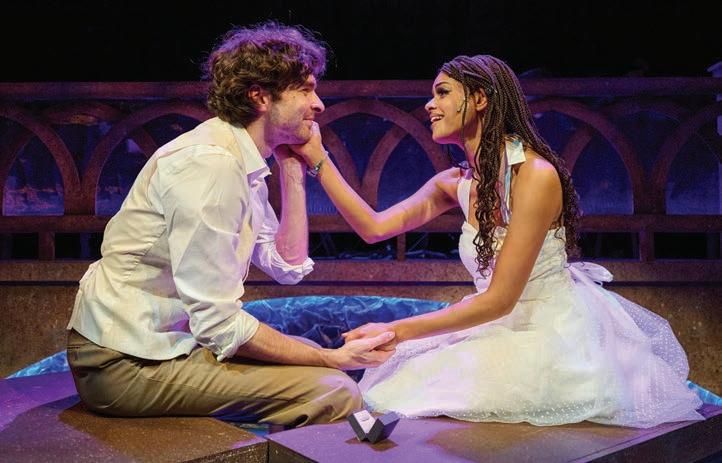



20 - 26, 2025
by Patricia Leslie
You don’t have to be Jewish to love Signature Theatre’s “Fiddler on the Roof.”
It’s a hit! A big one!
The story revolves around the dear papa, the strong and virulent Tevye (Douglas Sills) who’s got five daughters to wed and oh! my! “Tradition”!
If he only were a rich man.
The big, bad and old butcher, Lazar Wolf (Jeremy Radin) with money to spare and powerful in his performance, has a wandering eye to land on Tevye’s oldest, Tzeitel (Beatrice Owens) and wants her for his wife.
It’s tradition that the papa okays the nuptials with the approval, of course, from his dear wife, Golde (Amie Bermowitz who may receive second billing but her performance is dynamite).
The couple is thrilled and celebrates with matchmaker Yente (Susan Roman) who has put this all together.
Alas, Tzeitel has her sights on someone else, closer to her age, the tailor, Motel (Jake Loewenthal).
Meanwhile, amidst family turmoil and disagreements is the unease
and anxiety caused by the discrimination against Jews in Czarist Russia, the home of these Jews at the turn of the 20th century.
A university student, Perchik (Ariel Neydavoud), arrives and agrees to tutor Tevye’s daughters in exchange for room and board and wouldn’t you know it but Perchik falls for the second daughter, Hodel (Lily Burka)?
And then there’s Chava (Rosie Jo Neddy), their third daughter, about fifteen, a shy and bookish sort who falls in love with Fyedka (Alex Stone), God help us, a Gentile!
To break the bad news to Golde that their first daughter should not marry the rich butcher and ease their money worries, Tevye concocts a nightmare, one of the best scenes, and alone, worth the price of admission, which brings Golde’s grandmother Tzeitel (Rome in dual roles) back from the grave to bless the marriage, and also resurrects the ghost of the butcher’s dead wife (Sarah Corey) along with other ghouls (appropriately costumed by Ivania Stack) to warn against this grave injustice.
The parents reluctantly agree to the marriage of Tzeitel and Motel.
At the wedding, Perchik breaks Jewish traditions (read all about them
at the QR code) when he crosses the barrier between the men and women to dance with Hodel and they proceed to romance, asking Tevye’s blessing, not his permission.
After more soul searching, Tevye relents – the world is changing, and he must change with it (“Tevye’s Rebuttal”). He informs the young couple that he gives them his blessing and his permission.
And yet, still more! The gentile, Fredka, summons courage to ask Tevye to allow his marriage to Chava, the third daughter.
Another favorite scene and also worth the price of admission were the men folk dancers who performed prisiadki at the wedding, squatting with bended knees and kicking out their feet while four of them joined hands, turning, bent at the waist, and, simultaneously, balancing wine bottles atop their hats in the “bottle dance.” (You have to be there.)
This dance has roots in the mid14th century, an athletic feat supposedly a requirement of all Russian FSB agents. (Dance with me, Putin?)
This whole “Fiddler” story is centered around a large, movable wooden table crafted by scenic designer, Misha Kachman, whose parts




become a bed, a bar, and more, perfect for this theatre-in-the-round.
Tyler Micoleau’s lighting is effective, following the soliloquists when they command the stage while the other actors freeze onboard.
Under the direction of Jon Kalbfleisch, ten musicians sit high above, adding depth and wonderful sound to the singers, never overpowering them as often happens in musicals.
Joe Calarco directs; Sarah Parker, choreographed. Other actors are Christopher Bloch, Mia Goodman, Allison Mintz, Stephen Russell Mur-
ray, Joseph
After it opened on Broadway in 1964, “Fiddler” won nine Tony Awards and was the longest running Broadway musical for almost ten years (until “Grease” beat it.) The story and New York staging by Harold Prince and Jerome Robbins are based on Sholem Aleichem’s stories. Tickets start at $47. Now through Jan. 26, 2026. Signature Theatre, 4200 Campbell Ave, Arlington, VA 22206. (703) 820-9771. Plenty of free, lighted garage parking.
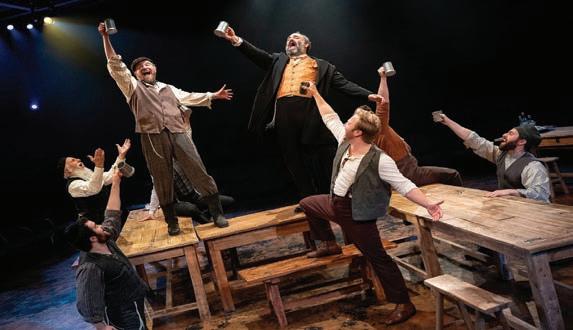
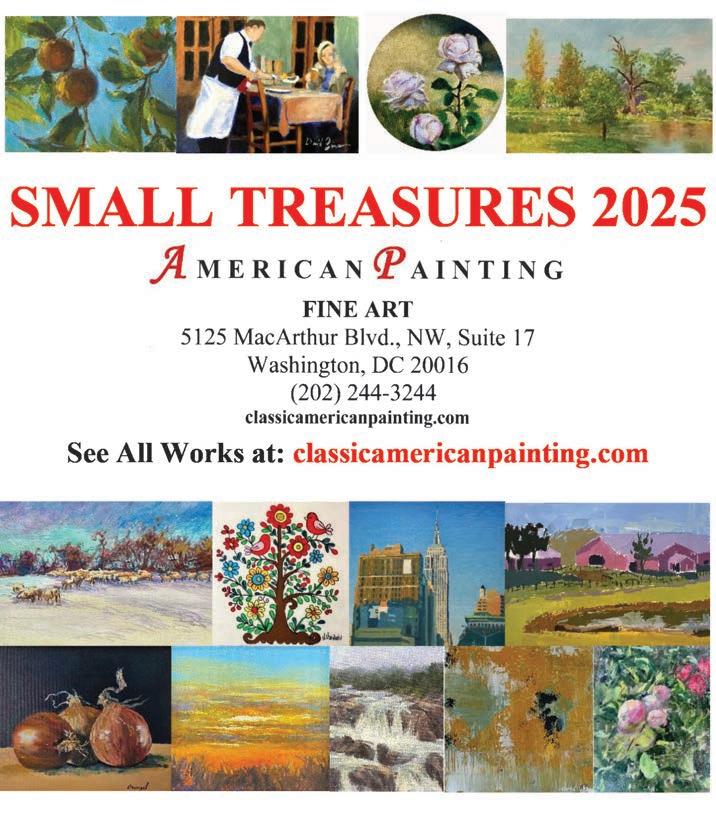
by Mark Dreisonstok
Visitors to the Studios at 307 East Annandale Road this past weekend enjoyed an open house of art, music, and food. We began our visit with the surrealist paintings of Dave Curtis (including an unusual musical take on the Cyclops myth from Homer’s Odyssey) and the surreal abstract art of Dara Friel, who showed us her new paintings of a heart and an angel. Then we espied a more classical view that of Venice: View of the Campanile from Punto Della Dogano in oil on canvas by resident artist Linda Donaldson.
One of the pleasures of attending the event was speaking with the artists. We met, for example, Sam, who goes by the moniker The Strange Lens. She has multiple spaces at the studio where she works in the color pink in different media and on artworks from the traditional to the practical to the abstract. When I asked her about this monochrome color choice, she told me she was influenced greatly by the late David Lynch, creator-producer of the cult
television series Twin Peaks. Despite watching Twin Peaks on blackand-white television in her native Ukraine, she always had the image pink in mind. We asked Charles Edward Andrew Lincoln IV about this, for he is a writer publishing an essay about the esoteric philosophy behind the TV series. Mr. Lincoln had this to say: “The choice of one unique color becomes what Lynch would call a ‘world-within-a-world,’ a space where heightened emotion quietly leaks through everyday objects. An all-pink room or studio is almost a new world into which you escape. That’s exactly how Lynch uses color in Twin Peaks, not as decoration, but as a portal into a different emotional register.”
We also met Tyler Cruse, and we were intrigued by the red and black spirals of his artwork Une Inspiration Japnonaise. He explains to us why he was inspired by Japanese art: “This piece evolved from an exploration of forms in a book on Japanese motifs. While the piece itself is not explicitly ‘Japanese,’ it evolved from and—to
me at least—evokes a sense of some of these elements. This is often how I work; the subject or feeling of a piece emerges during the process of creating it. I rarely begin with a result in mind.”
We next met Meaghan DeCelle. Meaghan started renting a small studio at 307 quite recently so she can paint in tranquility; many artists we met at 307 rent a studio there for this reason. Interestingly, several of her family members have a local connection, for they attended Trinity Academy Meadow View in Falls Church, a classical-curriculum school with a focus on teaching visual art. Meaghan, too, has a classical bent, as witnessed in her oil painting Siren, also reminiscent of Homer’s Odyssey and specifically the beauties who would lure sailors to their deaths by their beautiful music. The gallery card beside the painting notes: “Siren calls from the deep, hypnotic and enticing. Bold strokes and restless waves of color come to stillness in her gaze, pulling you into uncharted waters. Cool hues resonate as sea foam crashing over the warm
burnt umber sands. The maid stands tall amidst the surf, unshakable and unafraid.”
Also new to the 307 coterie— and the last artist we visited at the holiday party—is Cheyenne Ellanah. Our attention was immediately drawn to Cheyenne’s mixed media work “Divine Offering” of a woman bathed in light from above. She told us: “This piece was inspired by my own life and what I had to overcome to make it to this point. The truth I
have come to believe is that, whatever I’m carrying, if I bring it to the light, there it can be mended, there it can be made pure … the light I seek out in the world is only the awakening of the light that has always lived within me from the beginning.”
Studio artists welcome visitors regularly, so one need not wait until the next holiday party in order to appreciate the art and the sincerity of the artists’ visions at the 307 studios.
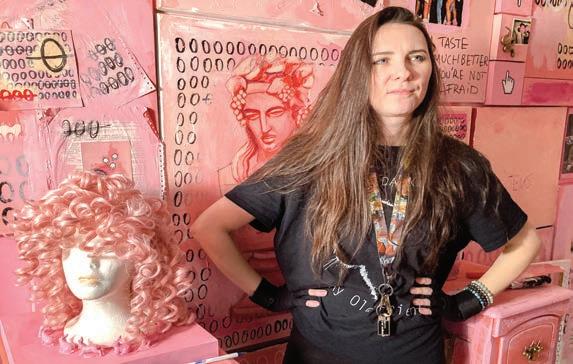

20 - 26, 2025
Arena Stage — Washington, DC
1101 6th St. SW, Washington, DC 20024
Website: arenastage.org
Fremont Ave. Run:
Now–December 7, 2025
Step Afrika!’s Magical Musical Holiday Step Show
Dates: December 5–21, 2025 A high-energy, familyfriendly holiday tradition blending stepping, music, rhythm, and seasonal storytelling.
Providence Players of Fairfax
James Lee Community Center Theater, 2855 Annandale Rd., Falls Church, VA 22042
Holiday Production: A Sherlock Carol — December 2025
Dates: December 12–20
Workhouse Arts Center — Lorton, VA Address: 9518 Workhouse Way, Lorton, VA 22079
December Events: - December 6 — Handmade for the Holidays, 2:00–4:30 p.m.
- December 13 — Glass & Ceramics Student Sale, 12:00–6:00 p.m. - December 20 — Into The Woods, 8:00–10:30 p.m. - December 21 — Into The Woods, 2:00–4:30 p.m. - December 26 — Into The Woods, 8:00–10:30 p.m. - December 27 — Into The Woods, 8:00–10:30 p.m. - December 28 — Into The Woods, 2:00–4:30 p.m. - December 31 — Into The Woods + New Year’s Eve Party, 8:00–11:59 p.m.
George Mason Center for the Arts — Fairfax, VA 4373 Mason Pond Drive, Fairfax, VA 22030
Holiday Concert: Chanticleer —
November 29, 2025 Holiday Pops: American Festival Pops Orchestra — December 13, 2025
Vienna Boys Choir — Christmas in Vienna
Date: Sunday, December 14 at 4 p.m.
Location: Center for the Arts, Fairfax (GMU)
Tickets: $71, $60, $45; half-price for youth through Grade 12 Info: cfa.gmu.edu
Falls Church Arts Gallery
700 W. Broad Street, Falls Church, VA 22046 On View: “Kinship” Exhibit through January 4, 2026
Website: FallsChurchArts.org
Little Theatre of Alexandria
600 Wolfe Street, Alexandria, VA 22314
Holiday Production: A Christmas Carol — December 6–20, 2025
American Painting — Small Treasures 2025 5125 MacArthur Blvd., NW, Suite 17, Washington, DC 20016
Phone: (202) 244-3244
Website: classicamericanpainting.com
Annual holiday exhibition featuring small-format fine art works from regional artists.
Northern Virginia Handcrafters Guild — McLean Holiday Art & Crafts Festival 1234 Ingleside Ave., McLean, VA 22101
Schedule: Early December (3-Day Indoor Event) December 5-7
Shenandoah University — December Events
Armstrong Concert Hall: 702 University Drive, Winchester, VA 22601
Goodson Chapel–Recital Hall: 1400 L.P. Hill Drive, Winchester, VA 22601
- December 1 — Clarinet Choir, 7:30 p.m.
- December 2 — Honors Chamber Music Recital, 7:30 p.m.
- December 4 — CONTEMPO Ensembles, 7:30 p.m.
- December 5 — Chelsea Cushman & Maja Tremiszewska, 7:30 p.m.
- December 6 — Percussion Ensemble, 2:30 p.m.
- December 6 — Choral Ensembles, 7:30 p.m.
- December 7 — Symphonic Band, 2:30 p.m.
- December 13 — NW Works Chimers, 2:30 p.m.
- December 13 — Phil Kline’s Unsilent Night, 5:30 p.m.
Creative Cauldron — Falls Church, VA
127 East Broad Street, Falls Church, VA 22046 Website: creativecauldron.org
Madeline’s Christmas Dates: December 5–21, 2025

Showtimes:
- Fridays — 7:30 p.m.
- Saturdays — 2:00 & 7:30 p.m.
- Sundays — 2:00 & 4:00 p.m.
Live at the Cauldron! — 2025 Holiday Cabaret Series Dates: December 8–18, 2025 Showtime: 7:30 p.m.
Gay Men’s Chorus of Washington, DC — The Holiday Show
Location: Lincoln Theatre, 1215 U Street NW, Washington, DC Showtimes:
- December 13 — 3 p.m. (ASL) & 8 p.m.
- December 14 — 5 p.m. (ASL)
- December 20 — 3 p.m. (ASL) & 8 p.m.
Tickets: GMCW.org ASL / Groups: (202) 293-1548
Falls Church City Holiday Events
- Moravian Stars WorkshopNovember 23
- A Very Victorian ChristmasNovember 29
- Winter Wonderland in The Little City - December 2
- Holiday Gift & Craft Show with Children’s ShoppeDecember 6
- Holiday Gift & Craft ShowDecember 7
- Toys for TotsEnds December 7
- Santa’s Ride Toy Drive - Ends December 9
- Santamobile - December 5–13
- Holiday TeasDecember 13 & 14




18 | NOVEMBER 20 - 26, 2025
by Patricia Leslie
The first show ever of its kind is a new exhibition by Belgium and Netherland women artists of the 17th and 18th centuries at the National Museum of Women in the Arts, a spectacular display of works loaned by 50 museums and private institutions from around the globe.
Many pieces in the survey, “Antwerp to Amsterdam, 16001750,” are presented in the U.S. for the first time.
Who knew there were so many female artists in those centuries? And there are many more, yet unaccounted for.
Their male counterparts of the era, Peter Paul Rubens, Johannes Vermeer and Rembrandt van Rijn are the ones we recognize, but these female names broaden our scope of artists who excelled at painting, printmaking, sculpture, paper cutting, calligraphy, a bit of lace and embroidery, and even some apparel, all on display.
Judith Leyster (1609-1660) is one name becoming more commonplace and she is here with
her self-portrait (c. 1630) borrowed again from the National Gallery of Art.
She is found in every major show of the period anywhere, her travels to museums perhaps matching those of Kash Patel on the private FBI plane he flies at taxpayers’ expense to visit his Nashville girlfriend.
Happily we learn from museum senior curator Virginia Treanor that these artists won praise and recognition during their lifetimes.
Portraits depict Leyster, Maria Schalcken (1645-1690) and Maria van Oosterwijck (16301693) in fine clothing, not usually associated with the “messy work of painting,” but reflecting the upper classes to which they wished to belong and many did, for who had time to follow passions when they were working and taking care of families?
It’s a huge exhibition with 150 works by 40 artists, filling an entire floor at the museum, arranged thematically, one gallery titled “Choices” about matters facing women then and now: To paint or not to paint?
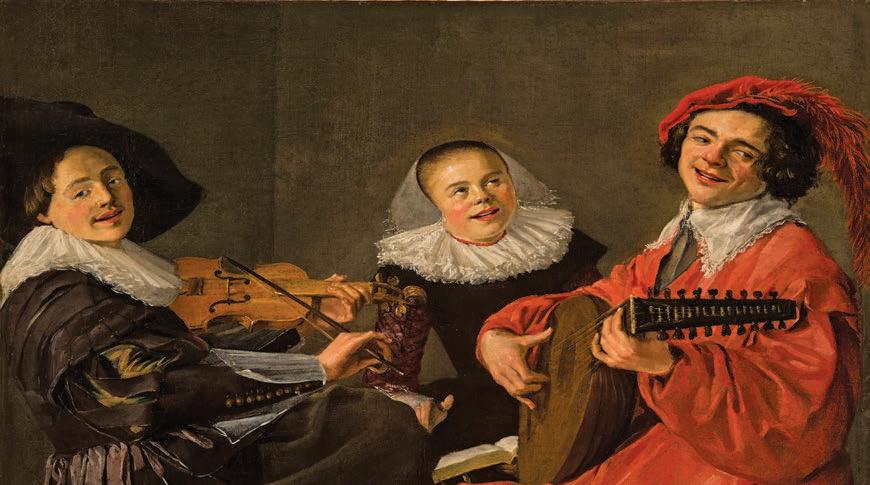
Focus on the family? Do both?
Rachel Ruysch (1664-1750) had “at least” 10 children, Treanor writes, but still painted for more than 60 years! When she died, she was honored by no fewer than 11 poets who wrote poems about her. Three of her works are in the show.
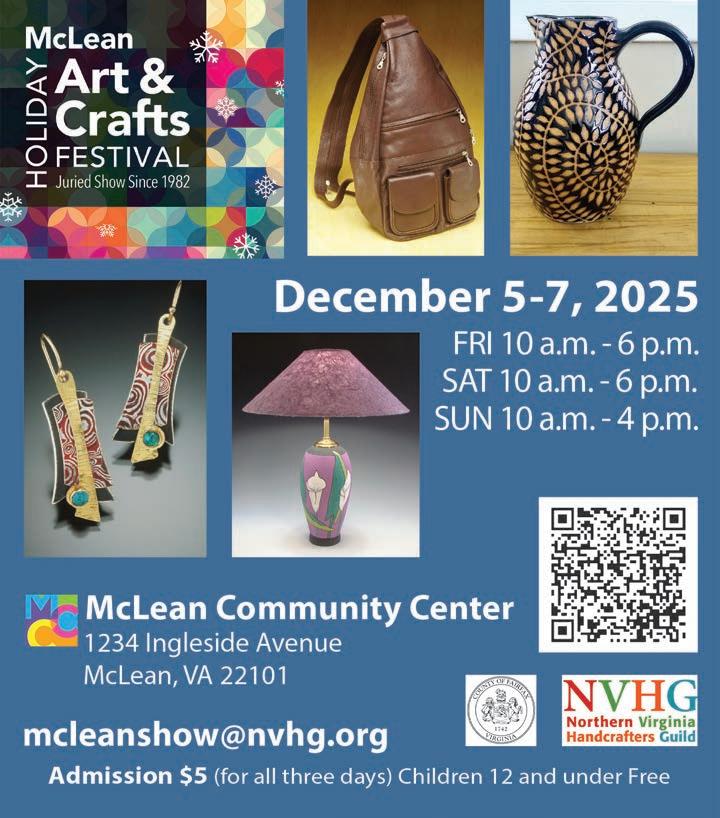
Lower-class female artists are not ignored here and are seen in the large oil (100 x 90 in.) Johannes de Mare painted in 1676, “Maiden’s House,” of about 100 and more female orphans hard at work, embroidering. It greets visitors upon entering the galleries.
Examples of lace of the period are included although names of lower-class artists are not known.
Textiles were another medium in which women excelled, obtaining higher prices for them
Continued on Page 19

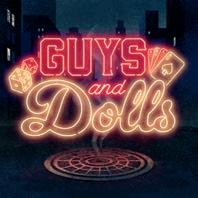
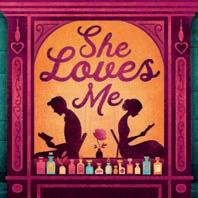







FALLS CHURCH NEWS-PRESS | FCNP.COM
from Page 18
than those paid for paintings, a difference from today.
Treanor says Joanna Koerten (1650-1715) was paid more than 4,000 guilders for a woven silk she made for the Holy Roman Empress or double what Rembrandt likely received (1,600 guilders) for his “The Night Watch” (1642).
All girls then were expected to learn sewing like I was way back in the eighth grade in North Carolina, a class I abhorred, stitching in a sleeve backwards to “show ‘em!” and earning a “D” in the class. Tsk, tsk. (Surely, NC has lifted that dark age requirement by now!)
This period was formerly known as the “Dutch Golden Age” which the museum says is “an outdated term” (politically incorrect?) because it “obscures” circumstances giving rise to a “luxury economy,” colonialism and social hierarchies, like gender discrimination.
As to be expected, the women’s works were sometimes attributed to males, like Leyster’s, often credited to Frans Hals or her hus-
band, Jan Miense Molenaer.
And it wasn’t until 2006 (!) that Maria Schalcken received acknowledgement for her “SelfPortrait in Her Studio” (c. 1680) which graces the cover of the catalogue (304 pages, $60 in the shop).
“Women Artists” closes Jan. 11 for its opening next spring at the Museum of Fine Arts in Ghent, Belgium, the exhibition’s co-organizer.
While visiting the NMWA, don’t miss photography art by Tawny Chatmom of Baltimore on the fourth floor.
Admission is free on the first Sunday and second Wednesday of every month at NMWA where admission costs for non-members are: $16, general; $13, seniors, D.C. residents, military, students, educators and more. Free for those under 21, the handicapped, and SNAP recipients. 10 a.m. – 5 p.m., Tuesday – Sunday. Closed on major holidays. 1250 New York Ave., NW, Washington, D.C. 20005. nmwa.org. 202-7835000. The closest Metro stations are McPherson Square and Metro Center.
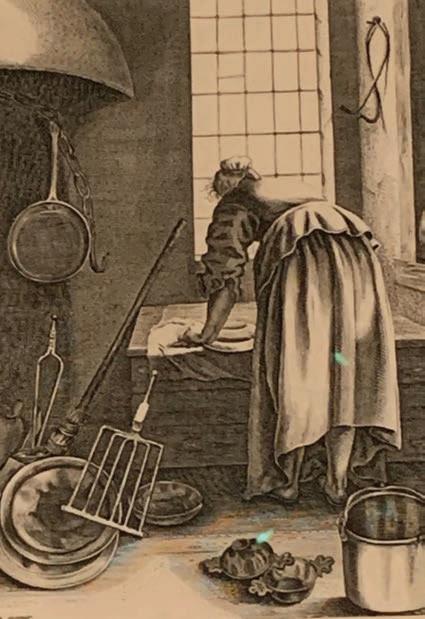
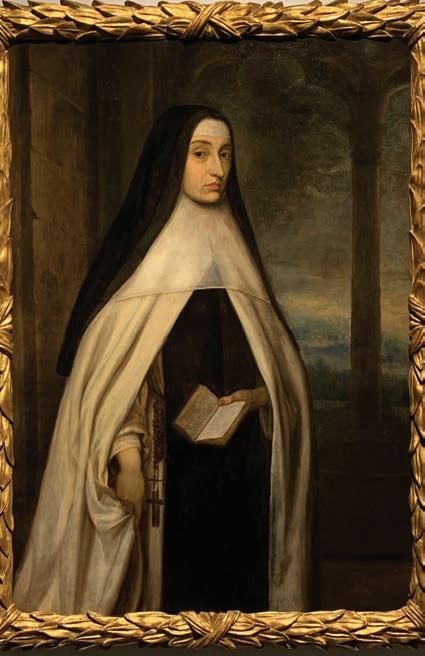
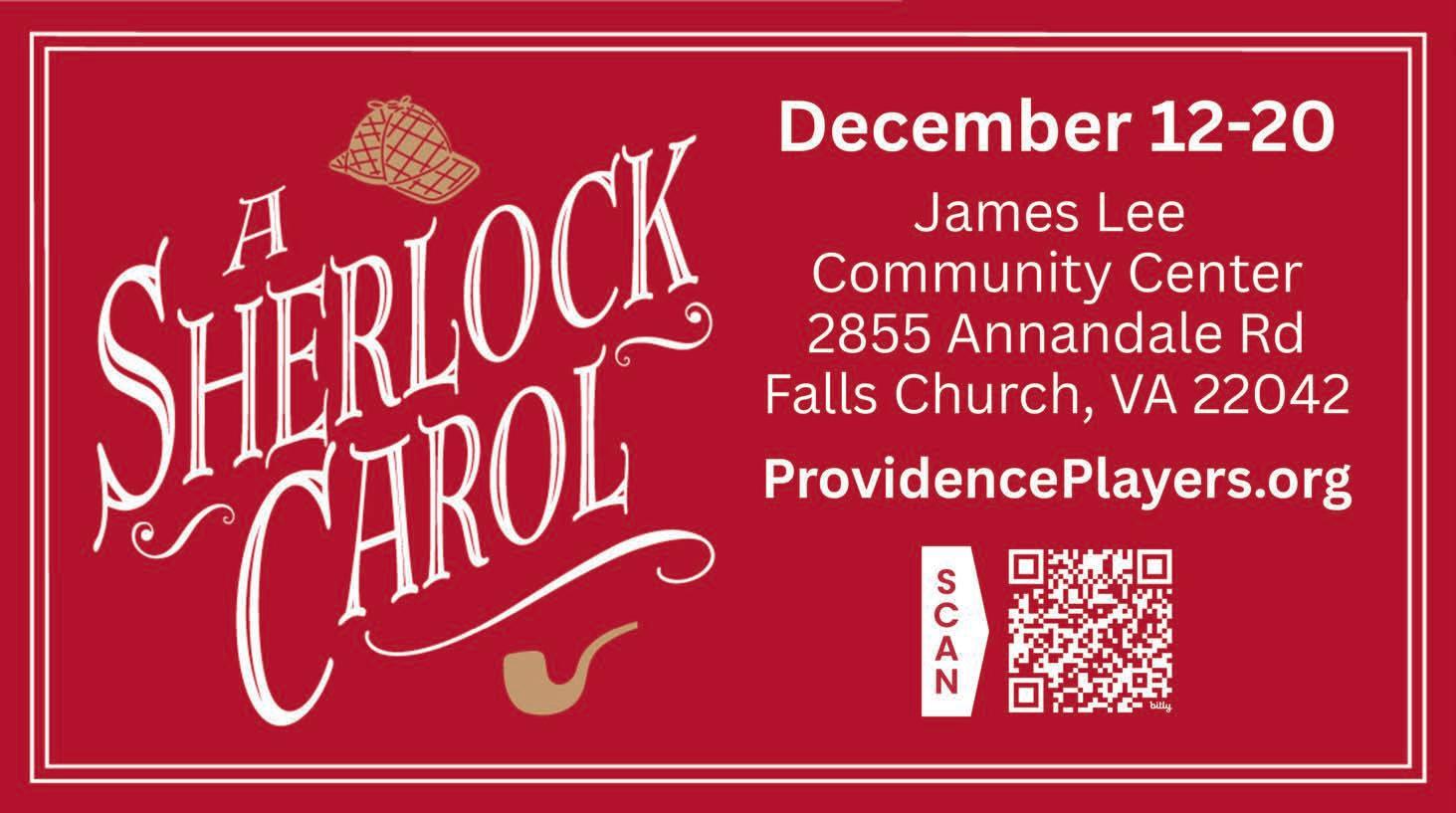



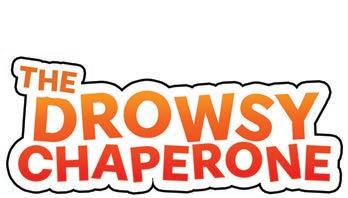
by Patricia Leslie
Coinciding with the 250th anniversary of the United States, the “first museum of modern art in the U.S.,” the Phillips Collection, has opened a show highlighting its holdings and spanning 100 years from 1918, when the museum was founded by Duncan Phillips and his mother Eliza Laughlin Phillips.
The exhibition is intended to honor “the country’s evolving cultural and artistic identity,” according to a statement.
The museum’s Vradenburg Director Jonathan P. Binstock writes that “Out of Many” seeks to broaden “our understanding of what American art has been and what it can be.”
There’s something for everyone here, sure to intrigue youngsters, too, and perhaps introduce them to modern and contemporary art with paintings, photographs, sculpture, print, mixed media and more.
More than 50 artists and 75 works are represented, some pieces loaned, several from the Phillips’s biggest partners in the venture, Howard University’s Gallery of Art and the David C. Driskell Center at the University of Maryland.
The title of the exhibition, “Out of Many: Reframing an American Art Collection” comes from the nation’s motto: E pluribus unum (out of many, one).
One of the events the Phillips will host is a session tonight on the political influence upon the arts and vice-versa with Pulitzer Prize winners Robin Givan and Jonathan Capehart and museum curators Adrienne L. Childs and Camille Brown.
Recognizable names on the walls are Grandma Moses (1860 – 1961), Georgia O’Keeffe (1887 – 1986), Romare Bearden (1911 – 1988), Esther Bubley (1921 – 1998) and William Christenberry (1936 – 2016), among many.
The handiwork by one of the nation’s notable quilters, Mary Lee Bendolph, hangs prominently in the entrance gallery, “Abstraction and Place.” Bendolph was born in 1935 in Gee’s Bend, Alabama where she still lives.
“Berkeley No. 1” by Richard Diebenkorn (1922-1993) is the first in a series of more than 50 abstractions he painted between 1953 and

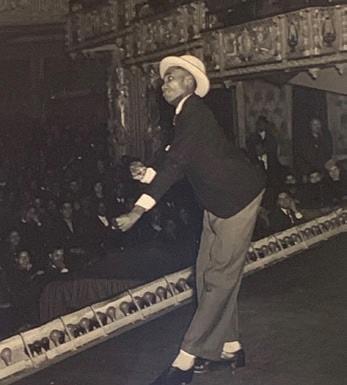
1955, found in the same gallery, he, an influencer on native Washingtonian Peter L. Robinson, Jr. (1922-2015) whose “Rock Creek Park” (2000) is nearby.
Robinson was a NASA employee interested in views of Earth from outer space who often visited the Phillips and its abstracts.
Another fascinating and historic work is by Benny Andrews (1930-2006) in a multi-dimensional “Trail of Tears” of oil on four canvases with painted fabric, mixed media and string. He depicts the forced relocation of the Eastern Woodlands Indians along the Trail of Tears (1838 and 1839) in his “rough collage” of cloth and other textiles.
The piece is part of the artist’s “Migrant Series” of three movements Andrews cites of mass displacement in the U.S., the Great Depression, the Gulf Coast after Hurricane Katrina and the Trail of Tears.
Tricky Dick Nixon is here, also, in a lithograph by celebrated cartoonist Patrick Oliphant (b. 1935) which Oliphant drew in 1984 titled “I Have Returned,” the subject seeming a lot milder these days compared to the present.
Some of my favorites are found in the gallery, “People: Social and Cultural Life,” portraying parties, night clubs, babies, and sewing circles.
The local artists represented include James Phillips, Delilah W. Pierce, James Amos Porter, Marguerite Burgess, Aaron Maier-Carretero, Rozeal, Joyce Wellman, Larry Cook, and Rush Baker IV.
An exhibition catalogue is available ($49.95) and a free audio guide. Major sponsors include the Terra Foundation for American Art and Altria.
The Phillips Collection, 1600 21st St., N.W. at Q St., Washington, D.C. 20009. Open 10 a.m.- 5 p.m., Tuesday – Sunday with the first hour reserved on Sunday for members only. “Pay-what-you-wish” every day after 4 p.m. Free admission after 4 p.m. on the third Thursday when the museum is open until 8 p.m. Admission is $20; $15, seniors; $12, active military; $10, students and educators; free for members and for children 18 and under. 202387-2151. Closed on major holidays.
